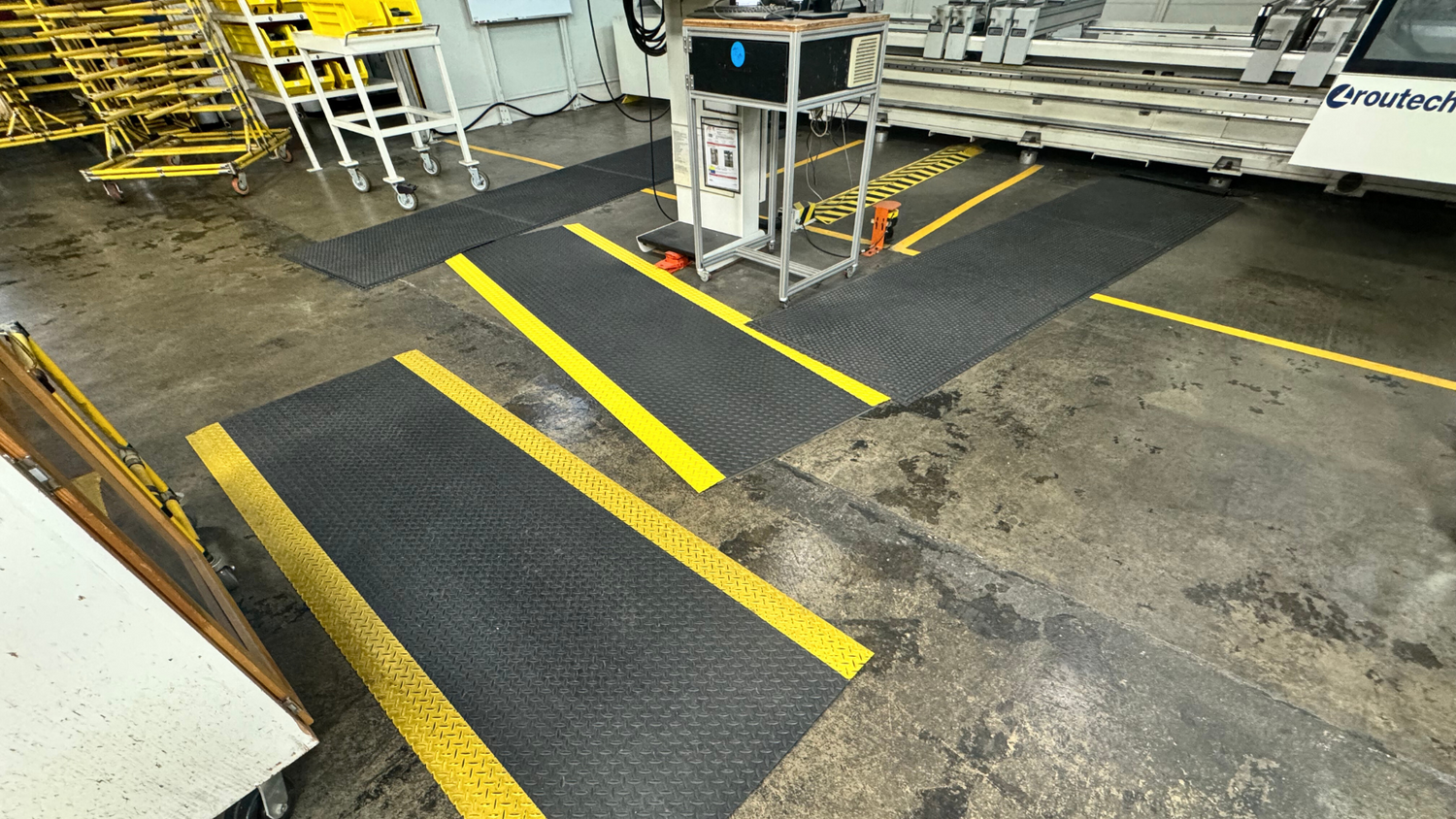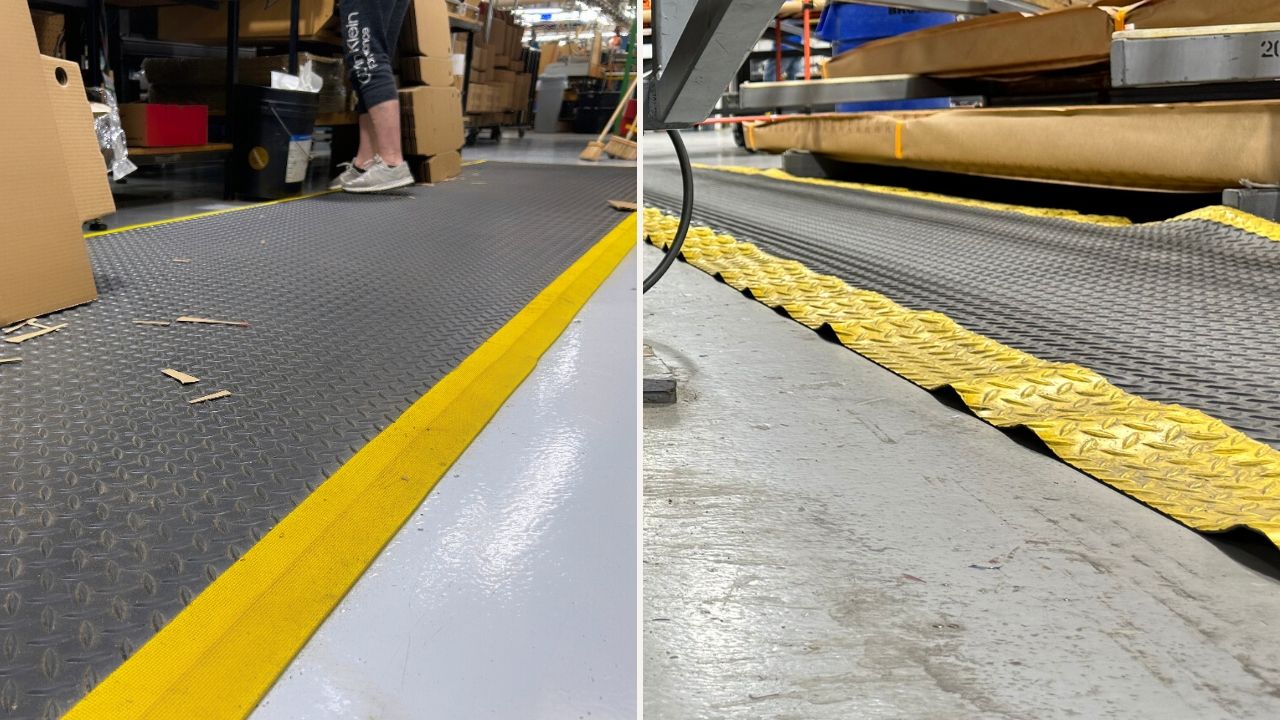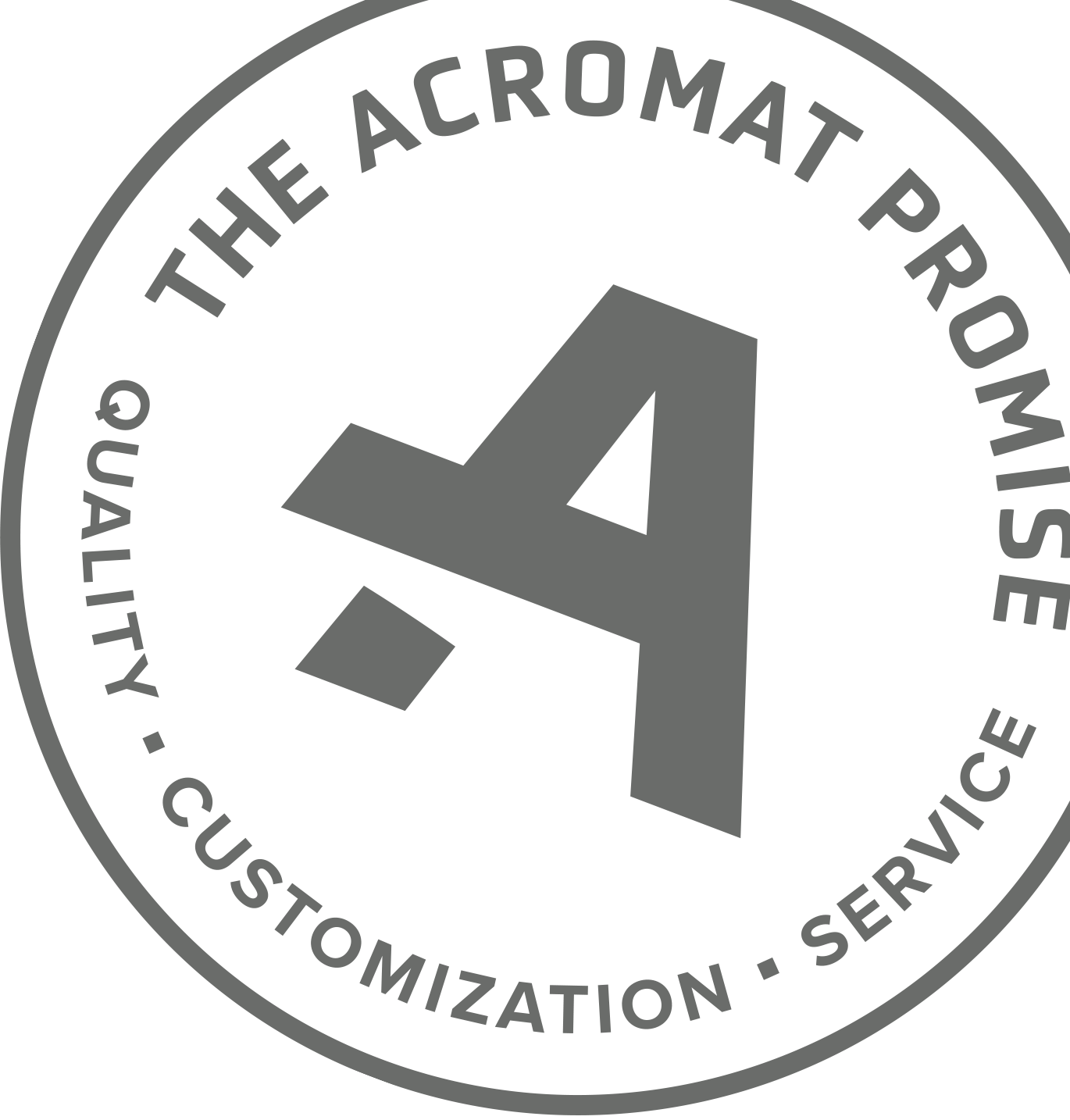Slips, trips, and falls are the No. 2 most common workplace injury. Musculoskeletal injuries (MSDs), or ergonomic injuries, are also in the top-5. If not properly researched, installed and regularly inspected, your anti-fatigue mats may be increasing the risk of both.
Here are 7 common anti-fatigue mat safety hazards, including proven solutions to make sure they are supporting your injury prevent efforts.

Updated with 2025 research and data, view our freely available eBook covering these 7 anti-fatigue mat safety hazards.
1. Missing Bevels
As low-quality or poorly designed mats age, it’s common for the edges to break apart. This is a clear trip hazard. It also impacts productivity when workers can't wheel carts and other equipment on to the mats, or if they have to spend extra time making sure they don't trip rather than focusing on the tasks at hand.

2. Dirty Mats Concealing Tripping Hazards
Whether dust, dirt, chemicals, metal shavings or food products, particles that build up over time can significantly reduce the life expectancy of your anti-fatigue mats. Dirty mats age faster, are slippery, and can obscure potential trip hazards.

3. Piecing Mats Together
Over 40% of safety leaders say their No. 1 challenge with anti-fatigue mats is having to "piece together" rectangular mats to cover a work area. Piecing together rectangular mats creates uneven surfaces, exposes the harsh and slippery floor below, and often leads to mats that slide around.
All of the above are clear and preventable trip hazards. Placing multiple mats together when a single custom shape is needed can lead to serious injury. As shared in No. 6 below, this anti-fatigue mat safety hazard combined with others actually led to a broken wrist for a leading manufacturing company.
 Showing the before of a Minnesota facility for nVent.
Showing the before of a Minnesota facility for nVent.
 Custom 100-1 Series mat designed for nVent to eliminate the hazards of individual rectangular mats being pieced together. The one-piece custom mat wraps around the entire work area. No sliding mats, exposed slippery cement, or inconsistent borders and surfaces.
Custom 100-1 Series mat designed for nVent to eliminate the hazards of individual rectangular mats being pieced together. The one-piece custom mat wraps around the entire work area. No sliding mats, exposed slippery cement, or inconsistent borders and surfaces.
4. Sunken or Flattened Mats
Low-quality anti-fatigue mats like PVC foam and PVC/nitrile blends compress over because of the open cell, porous construction. Compressed mats lose their ergonomic support, increasing the risk of MSD injury and rolled ankles.
According to the National Safety Council, MSDs affect 25% of the world's population. 33% are below the age of 35.
According to the World Health Organization, MSDs are the leading contributor to disability worldwide.
According to the U.S. Department of Labor, MSDs are the most frequently reported cause of lost or restricted work time.
According to the National Institute for Occupational Safety and Health, work environment and MSDS are directly connected.
Inspecting the ergonomic support of your anti-fatigue mats isn't a maybe; it's a must. Here are 5 ways to test the ergonomic support of your mats:

Made from premium nitrile rubber, AcroMat anti-fatigue mats are guaranteed to never sink, flatten or lose their ergonomic cushion. This ensures your people experience the ergonomic benefit the entire life of the mat.
5. Stacked Mats
We often see anti-fatigue mats that are stacked on top of each other during safety assessments. Operators do this with bad mats to create more comfort. Beyond the tripping hazard this causes, stacking mats causes ergonomic issues – impacting a worker’s feet, back, and neck over time.
We asked Certified Professional Ergonomist and Occupational Therapist, Mary Plehal, about the impact of stacked anti-fatigue mats:
"The biggest concern from an ergonomic point of view is that stacked mats may seem to have more cushion which is perceived as a good thing. In reality, it creates postural instability and can cause the feet, ankles and upwards to the low back to have to make micro-adjustments – similar to working in high heels – on a continuous basis. Stacking can lead to discomfort, fatigue, and MSD injuries."
"In my experience, AcroMat mats are the most highly rated by employees in terms of comfort. Once they gain a reputation in a plant, employees will request them specifically. There is absolutely no need for double-stacked AcroMat mats."

6. Too Small or the Wrong Shape
Mats that are too small or the wrong shape can lead to trip hazards and MSD issues because workers have to constantly move on/off the mat, work on the edge of the mat, or work half on/half off the mat.
As one ergonomist put it, "It would be better if they had no mat at all."
The Toro Company, a leading lawn maintenance manufacturer, shared that a worker tripped and broke their arm due to rectangular mats that were too small, different thicknesses, overlapped and pieced together. The inconsistencies and exposed cement flooring created a trip hazard in a tight area.
The EHS manager partnered with AcroMat to design a custom anti-fatigue mat that wrapped around equipment and covered the entire area. Hear the full story below:
7. Mats Long Past Their Useful Life
Inspection often starts with the eye test. If your mats have a life expectancy of 2 years and it's been 3+ years, there's a good chance you're experiencing several of the challenges above.

This facility had mats that were 6 years old. Borders were curling, bevels were missing, modular tiles were coming apart, and the ergonomic support was long gone.

The company re-made the work area with a one-piece custom mat made from 100% nitrile rubber, which does not lose its ergonomic cushion over time. The mat wraps around machinery, covers all harsh surfaces, and the built-in yellow stripes communicate with laser technology to ensure worker safety.
Bonus: Curling Borders
We asked over 100 safety leaders, "What is the most common complaint you receive from employees about their anti-fatigue mats?" Curing borders / edges was second on the list. As cheap, poorly constructed or designed mats age, their borders curl. Coined the "bacon effect" by one of our clients, it's a major safety hazard and an ever-present issue.
At AcroMat, we exclusively design our mats to prevent curling and build this into our 2-year full replacement warranty. Look closely at your warranties, ask your supplier how their mats are designed to prevent curling, and make sure the material is durable enough to hold up in your environment.
Summary: Make Time for Inspection
Inspection doesn't have to be complicated. It just has to be consistent. Start by talking to your people, watching them as they work, standing on the mats yourself, looking for the hazards above as you walk the floor, and documenting every step so it's repeatable, scalable, and can be formally communicated.
While a common cause of injury, slips, trips, and falls are also the No. 1 most preventable workplace injury. The same can be said for MSD injuries. By carefully reviewing your anti-fatigue mats and replacing the low-quality mats with ones guaranteed to perform, you can make sure your people go home from work as healthy as when they arrived.




